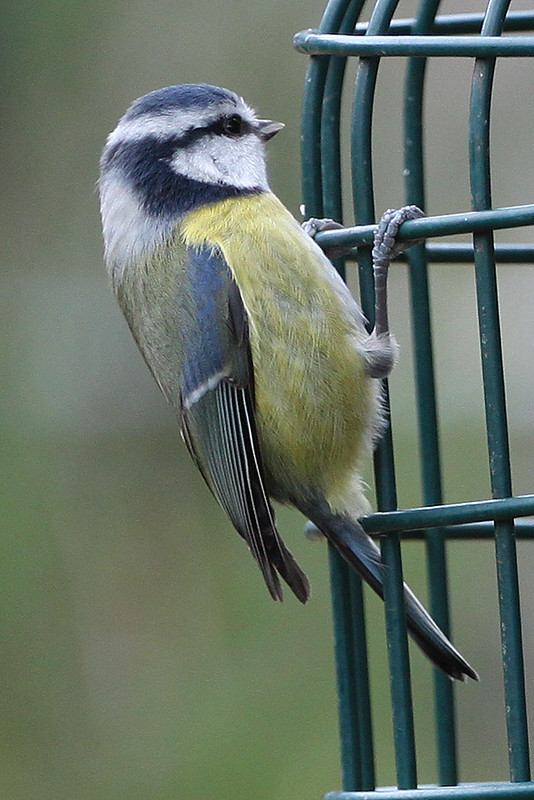Announcement
Collapse
No announcement yet.
Bluetit, My first post
Collapse
X
-
Re: Bluetit, My first post
You have some good detail in the bird but the shot particularly the background looks very noisy, presume a big crop ,and the bird a bit washed out. I am not a fan of feeders in shots - try putting up a branch nearby for them to stop off at on the way to the feeders
Stan
Comment
-
Re: Bluetit, My first post
Thanks guys for your input.
Stan, having looked at your photos, I have a question. How do you manage to focus on a small moving garden bird quick enough to take your shot? This shot was admitedly hand held, and a tripod would undoubtedly help with sharpness. You also correctly pointed out a fairly large crop. That aside I did have difficulty locking on to such small birds moving so quickly. Any tips?
Cheers, Garry
Comment
-
Re: Bluetit, My first post
Common technique is to find a suitable branch and stage at a locatin to suit you (somewhere near your normal feeders but far enough away so they don't appear in your shots and without distracting background). Drill some holes on the top just out of sight from where you plan to take pics from. Fill these with fat/seeds and the birds will soon get idea its a possible spot to get food.
Then pre focus on the correct spot and you should have some success.Canon 5D3, 7D2, 60D, Canon 70-200L f2.8 IS II, Canon 300 f4L IS, Canon 16-35 f4 L, Canon 24-105mm f/4L IS USM, Canon 1.4 MkIII extender, Sigma AF 10-20mm f/3.5 EX DC HSM, Sigma 150-600 Contemporary, Tamron SP AF 70-300 F/4-5.6 Di VC USD, Canon EF-S 18-55mm 1:3.5-5.6 IS
https://www.flickr.com/photos/16830751@N03/
Comment
-
Re: Bluetit, My first post
Hi Garry,
What camera body are you using? I go for a lot faster speeds - 1/800 -1/2000sec depending on what I'm shooting and how much light there is. This will give you a lot sharper pictures. The other thing is, I don't use the ISO's such as 320 because I feel they allow in a little bit of extra noise. I stick to the 'whole' ISO numbers, 200; 400; 800; 1600 etc. This is a personal thing, some may have other ideas about which ISO is the best way to go.
That's just my 2pence worth - good first effort all the same
TTFN,
NeilNeilly's Flickr Page
http://www.flickr.com/photos/60833437@N08/
Facebook
https://www.facebook.com/pages/Neil-...67642190098333
Comment
-
Re: Bluetit, My first post
Its practice more than anything else - over a period of time you learn to anticipate what they are going to do and some birds, eg robins, will stay put longer than others, blue tits etc. I never use a tripod and always choose the focus point, never let the camera decide, and usually the centre one and ensure it is placed over the eye. Mostly i am shooting small birds from nature reserve hides where perches and feeders are set up and by watching for a time you very soon get to know the places where the birds will stop off either on their way to or from the feeders. With noixe issues as Neilly says avoid the in between ISO's if you can and try to get as near to the birds as you can to avoid a heavy crop. The 1.4 converter would be a good addition to your kit to give you that extra reachStan, having looked at your photos, I have a question. How do you manage to focus on a small moving garden bird quick enough to take your shot?
Stan
Comment
-
Re: Bluetit, My first post
Thanks guys for the advice.
Neil, my camera body is a 500d. What setting do you use? I tend to use Tv and Av, but I guess some might say this is a bit of a cheat? I also have iso on auto most of the time, hence the inbetweens. I had no idea there might be an issue with doing that. I have started experimenting with these settings to see what effect this has, but it is more hit and miss. So, with higher shutter speeds am I right in saying I will have to open up the apperture further and reduce the ISO? This shot was with a 70-200f4L.
Stan, with the focus, I do tend to set the centre point as the focal point, but trying to focus on the eye of a bluetit, with a 70-200 f4, handheld, at even 10m is a little beyond me at the mo! I'll keep practicing though. I have looked at the 1.4 converter already, but budget is a bit prohibitive at the moment. Hopefully one day soon though.
Thanks, Garry
Comment

Comment